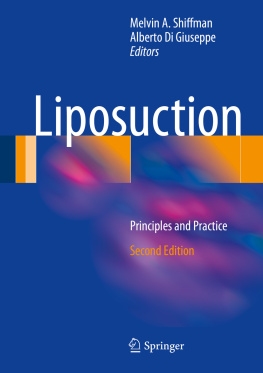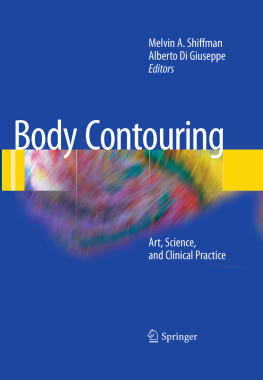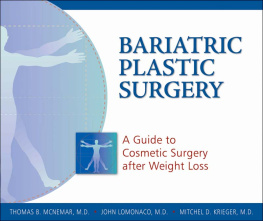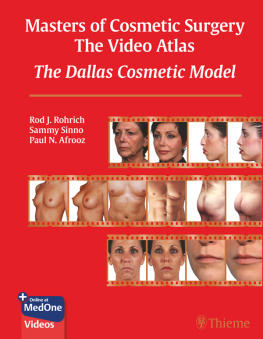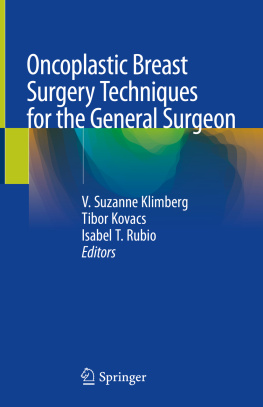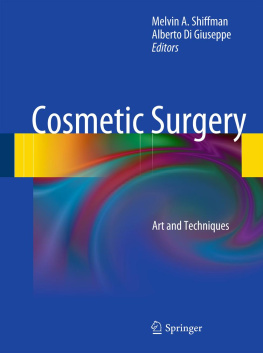Springer-Verlag Berlin Heidelberg 2016
Melvin A. Shiffman and Alberto Di Giuseppe (eds.) Liposuction 10.1007/978-3-662-48903-1_1
1. Anesthesia for Liposuction
Abstract
As a result of advances in surgical technique and anesthesia practices, the safety and popularity of liposuction has continued to increase. With the assumption of a more critical role in the selection of the facility as well as the delivery of the anesthesia, the surgeon must also accept the responsibility to understand the requirements of safe anesthesia practices. At the same time, anesthesia providers must recognize the unique characteristics of the surgical techniques involved with liposuction. Although considered an extremely safe procedure, liposuction still has the potential for life-threatening complications related to both surgery and anesthesia such as infection, hemorrhage, respiratory failure, congestive heart failure, and pulmonary embolism. Because of the unique population of patients who seek liposuction, there is a greater risk of comorbidities such as morbid obesity, diabetes mellitus, hypertension, sleep apnea, and airway abnormalities that may increase the risk of anesthesia and surgery. In light of these potential risks, each patient must be critically assessed preoperatively to determine if comorbidities exist that may increase the risk to the patient. In some cases, office-based procedure may not be the appropriate setting for the surgical procedure. Options for anesthesia techniques include local, local with sedation, regional, and general. The determination of the most appropriate anesthesia technique must be based on the type and extent of the liposuction and the patients individual preferences and risk factors. In cases involving large-volume liposuction, large volumes of infusate, potential hemodilution, occult blood loss, and unpredictable amounts of aspirate, perioperative fluid management presents a unique challenge to the anesthesia provider. Postoperative complications may be minimized with recovery and discharge criteria that meet strict nationally accepted standards.
Dedication
To my mother, Mary Ellen Bennett (19172009), whose enduring love, support, and encouragement know no boundaries.
1.1 Introduction
Nearly 75 % of all elective surgery is performed in an outpatient setting []. The advent of minimally invasive procedures has further reduced the need for hospital-based surgeries.
Regulatory agencies such as American Association for Accreditation of Ambulatory Surgery (AAAASF) and Accreditation Association for Ambulatory Health Care (AAAHC) have helped establish minimum standards of care for surgical locations where anesthesia is administered. Ambulatory anesthesia has even become a formal subspecialty of anesthesia with the establishment of the Society for Ambulatory Anesthesia (SAMBA) in 1984. An evaluation of 1.1 million outpatients revealed that the mortality rate after ambulatory anesthesia was 1.5 per 100,000 cases [].
As a consequence of the shift away from hospital-based surgery, the surgeon has adopted a more important role in the medical decision making with respect to anesthesia. Frequently, the surgeon decides on the location of surgery, the extent of the preoperative evaluation, the type of anesthesia to be administered, the personnel to be involved in the care and monitoring of the patient, the postoperative pain management, and the discharge criteria used. Therefore, it is incumbent upon the surgeon to understand current standards of anesthesia practice. If the surgeon chooses to assume the role of the anesthesiologist, then he or she must adhere to the same standards that are applied to the anesthesiologist. While the morbidity and mortality of anesthesia have decreased [], risk awareness of anesthesia and surgery must not be relaxed.
1.2 The Surgical Facility
The surgeon is largely responsible for deciding which facility the procedure is to be performed. Surgical facilities may be divided into five main categories:
Hospital-based inpatient
Hospital-associated ambulatory surgical units
Freestanding surgical center with short-stay accommodations
Freestanding surgical centers without short-stay accommodations
Office-based operating rooms
Each of these choices has distinct advantages and disadvantages. While convenient, economical, and private, office-based surgery is associated with up to four times the mortality as surgeries performed at certified freestanding ambulatory surgical centers [] reported that 21 % of the complications that occurred as a result of procedures performed in certified ambulatory surgical centers were fatal, whereas 64 % of the adverse outcomes that resulted from procedures performed in office-based settings were fatal. Forty-six percent of the complications that occurred in the office-based settings were considered to be avoidable, while only 13 % of the complications were considered avoidable in the certified ambulatory surgical centers.
Grazer and de Jong [].
Patients with a risk of ASA III undergoing major surgical procedures such as large volume should preferentially be treated at hospital-based or hospital-associated surgical units rather than an office-based operating room []. The American Society for Aesthetic Plastic Surgery has decreed that its members only operate in office-based settings that have been accredited by any one of the three accrediting agencies.
The operating room must be equipped with the type of monitors required to fulfill monitoring standards established by the ASA [].
1.2.1 Personnel
One of the most critical elements of a successful surgical outcome is the personnel assisting the surgeon. Qualified and experienced assistants may serve as valuable resources, potentially reducing morbidity and improving efficiency of the operating room [].
1.3 Preoperative Evaluation
The time and energy devoted to the preoperative preparation of the surgical procedure should be commensurate with the efforts expended on the evaluation and preparation for anesthesia. The temptation to leave preoperative anesthesia preparation of the patient as an afterthought must be resisted. Even if an anesthesiologist or CRNA is to be involved later, the surgeon bears responsibility for the initial evaluation and preparation of the patient. Thorough preoperative evaluation and preparation by the surgeon increase the patients confidence, reduce costly and inconvenient last-minute delays, and reduce overall perioperative risk to the patient []. If possible, the preoperative evaluation should be performed with the assistance of a spouse, parent, or significant other so that elements of the health history or recent symptoms may be more readily recalled.
A comprehensive preoperative evaluation form is a useful tool to begin the initial assessment. Information contained in the history alone may determine the diagnosis of the medical condition in nearly 90 % of patients []. Regardless of which format is selected, information regarding all prior medical conditions, prior surgeries and types of anesthetics, current and prior medications, adverse outcomes to previous anesthetics or other medications, eating disorders, prior use of antiobesity medication, and use of dietary supplements which could contain ephedra should be disclosed by the patient.

